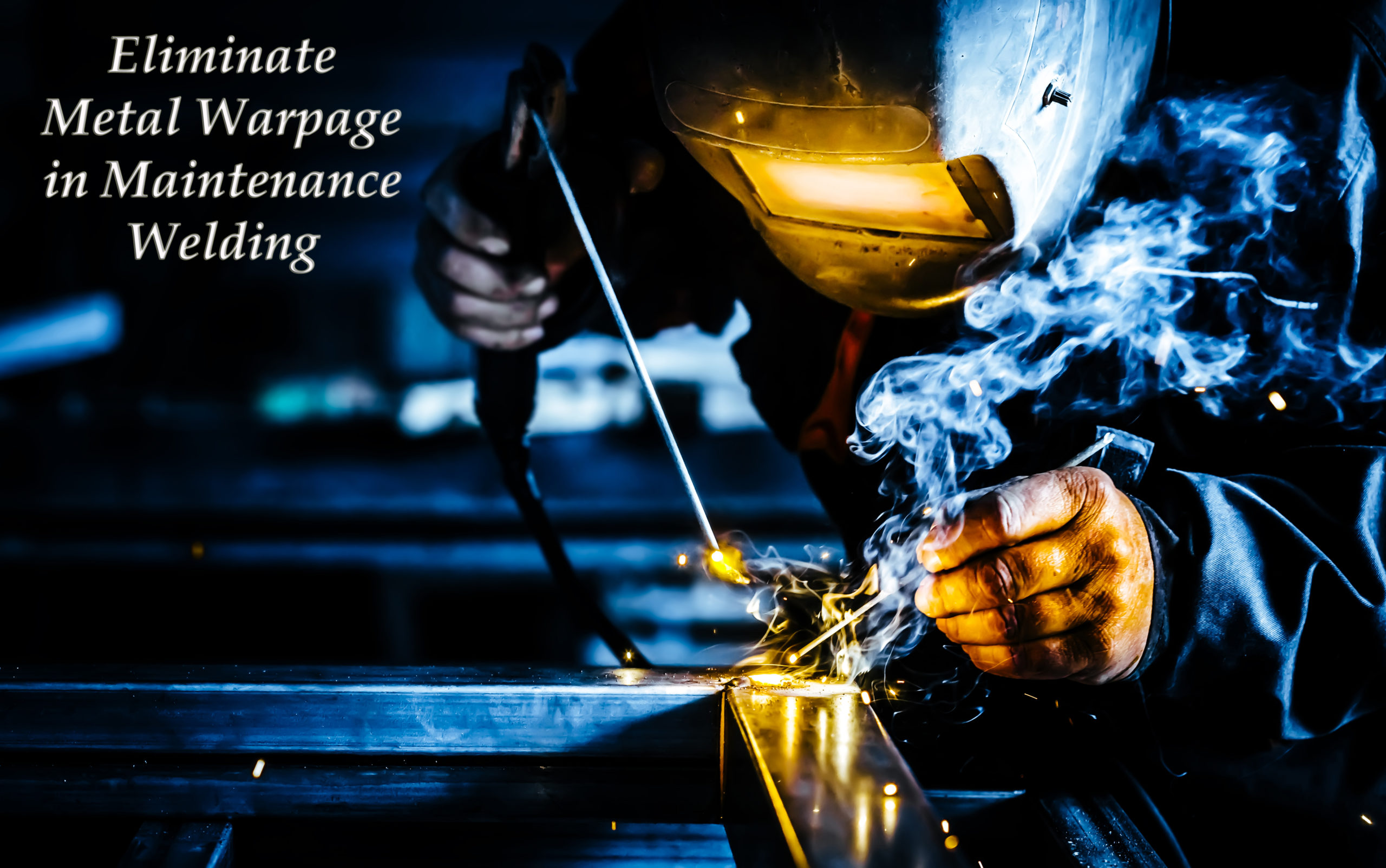
Are you planning to repair or maintain a piece of metal equipment and would like to know how to prevent the metal parts from warping when welding them?
This is a question we often get at Muggy Weld.
After all, the distortion welding metal can create is not appealing aesthetically and can negatively impact the efficiency of a piece of equipment or product. So, if you’re looking for ways to eliminate or control metal warpage, know that you’re not alone. This is a recurrent issue we’ve all encountered when welding, including seasoned pros! That’s why we’ve decided to tackle the problem in this article and tell you everything you need to know about metal warpage and how to eliminate it.
What Is Metal Warpage and How Does It Form?
Metal warpage refers to the distortion that a base metal gets, being bent or twisted out of shape, because of the amount of heat involved in the welding process.
But how does metal warpage form exactly?
As mentioned, heat is the most common culprit. Indeed, the warpage of the metal tends to increase as the temperature goes up during the welding process. That’s because when the metal heats, it tends to expand while it usually contracts when cooling down.
Let’s take a closer look at the phenomenon.
When a metal is heated, it automatically expands. Now, if it’s unrestricted, it will then contract the same amount when cooling down and no warpage or distortion will occur. However, when welding, you’re working on a specific part that belongs to a larger metal piece. This means that the section you’re working on is restrained. What’s more, this section is not heated at the same temperature as the rest of the piece.
The partial restraint and the lack of uniform heating explain the thermal distortion and warpage that happens during the welding process.
Now, why is metal warpage an issue for welders?
As mentioned, warpage can not only cause unappealing aesthetics on the final component, piece of equipment, or product but it can also render the machine or component you’re working on unusable preventing it from performing its intended purpose.
How To Eliminate And Prevent Warpage?
Anticipating Welding Warpage
The first thing any wise welder would advise you to do before working on a project is to visualize the whole process and anticipate potential problems that may arise. Seeing the big picture can help you better prepare and minimize metal warpage in some instances.
So, take a few moments to assess what needs to be done and what material you’re working with. For instance, light materials tend to warp more than denser ones, so working with lighter materials might require you to take extra precautions.
Taking some time to evaluate the job or project will allow you to determine what technique you should use and how to make distortions work for you.
Presetting The Parts
If you can, preset your parts as it can significantly reduce the amount of distortion.
Position all the parts you need to weld together in the right layout and run some test welds. This will help you identify potential problems such as gaps, abrasions, or dents and ensure you assemble the components in such a way that you can compensate for any distortions.
Also, don’t hesitate to use tack welds before performing the final welds.
Applying a Welding Heat Sink
Applying a heat sink either on the surrounding area of a weld or directly behind it when welding can help prevent the heat from spreading, thus dramatically reducing the risks of damaging the metal around the weld. That’s because welding heat sinks are designed to keep your equipment cool through a heat transfer process.
But how does it work exactly?
Well, welding heat sinks are usually made of copper, aluminum, or brass. Now, these metals have good thermal conductivity, meaning that they tend to absorb heat better than other materials such as steel. And this, in turn, helps prevent welding distortion.
Using Intermittent Welding When Possible
Intermittent welding is a great technique to prevent warping. It involves leaving evenly spaced gaps between each weld instead of running a bead along the whole length of the juncture. Why would you want to do that? Because intermittent welding minimizes the amount of heat put into the weld. Plus, the sections that haven’t been heated won’t be distorted, thus providing heated areas a little room for expansion.
While intermittent welding might not be possible for all of your projects, try and assess whether each project needs a solid, long bead. In some instances, intermittent welding might work just as well, if not better!
Clamping
Properly clamping your metal parts can help prevent warping. Indeed, the clamps will hold the parts together when welding, thus helping you control distortion.
However, note that, for clamping to be effective, you need to ensure you’re using the right equipment based on the type of job and the materials you’re working with.
Looking For A Reliable American Welding Supply Provider?
At Muggy Weld, we’re committed to providing our clients with high-quality welding supplies. Our goal is to provide welding industry players like you with premium welding products that will withstand the test of time and help you save time and money on repairs and maintenance down the road. Our heat sink and low-temperature solder are both manufactured in the US and will help prevent metal warpage when welding.
So, if you’re looking for quality equipment, don’t hesitate to visit our website to browse our range of products. And if you’d rather have a chat to discuss your needs in more detail, don’t hesitate to get in touch.
The team will be happy to assist you!
